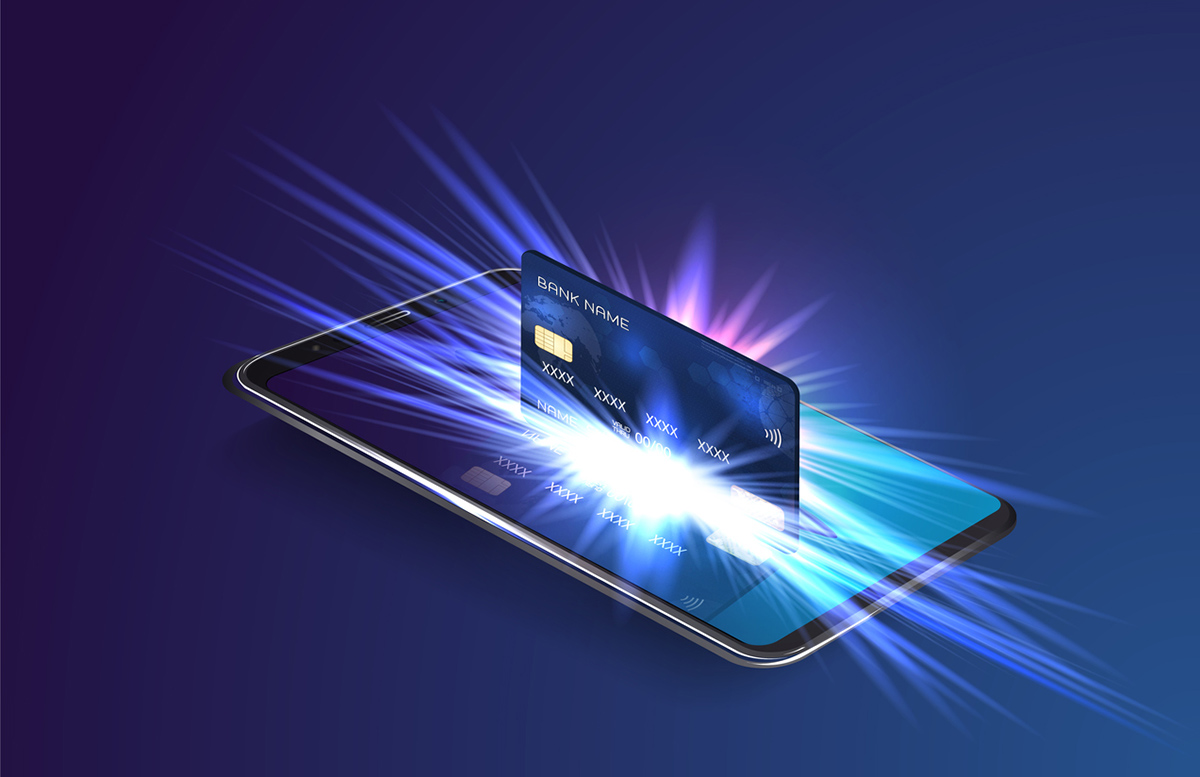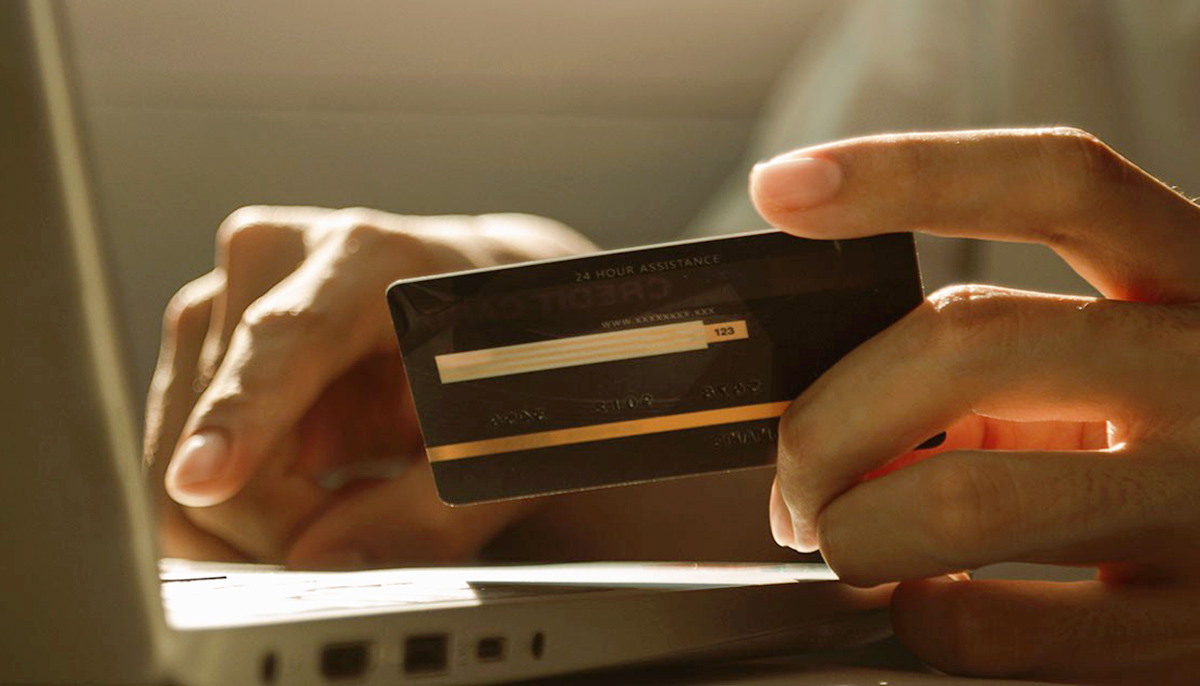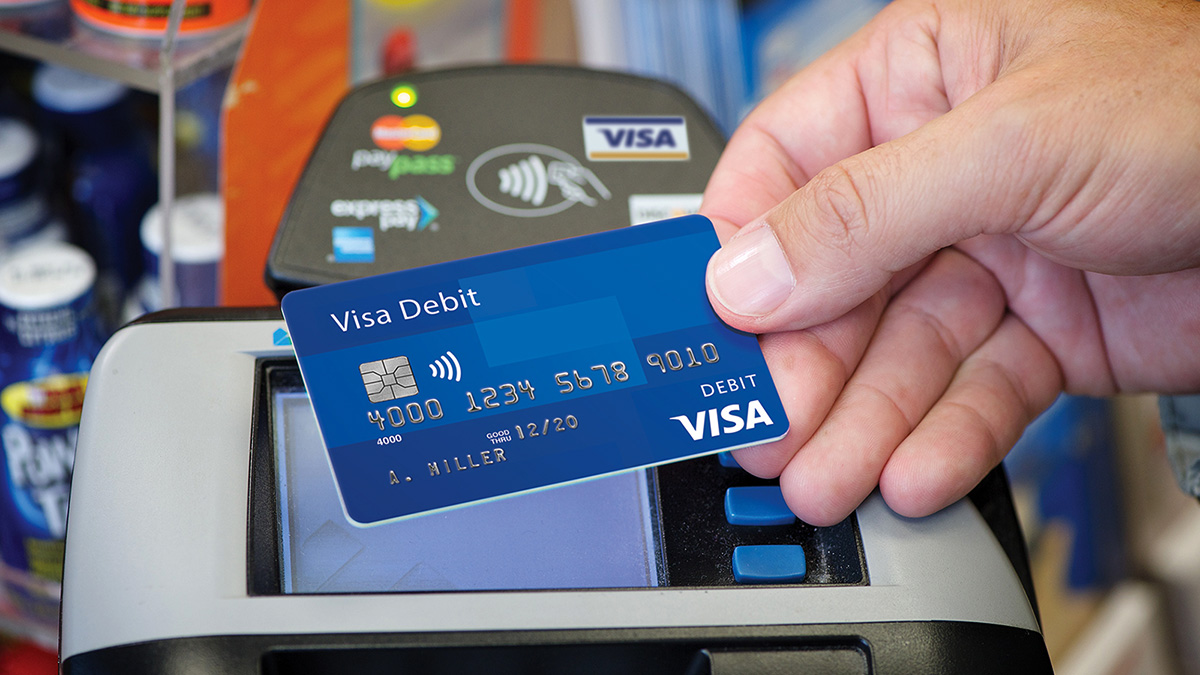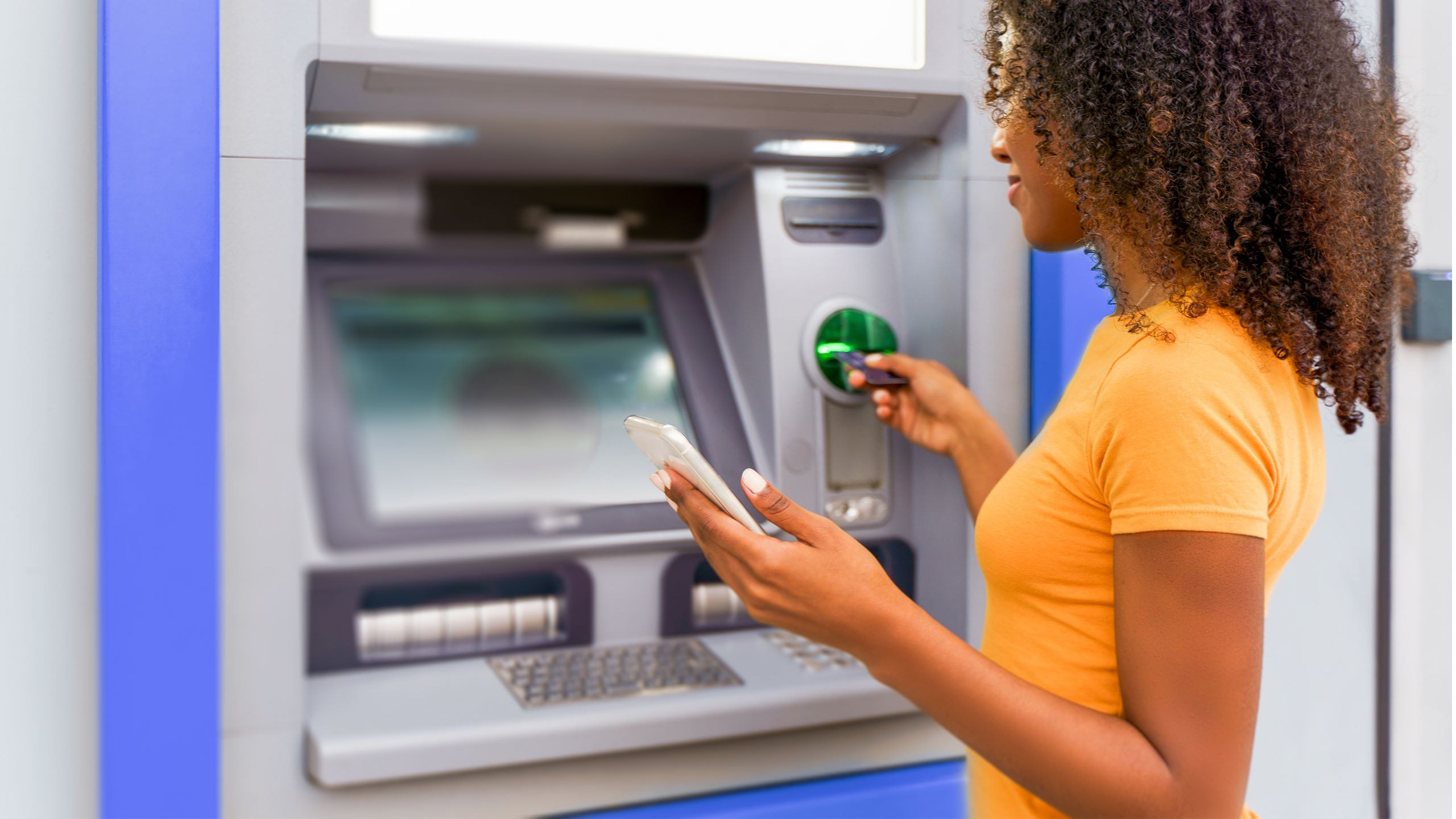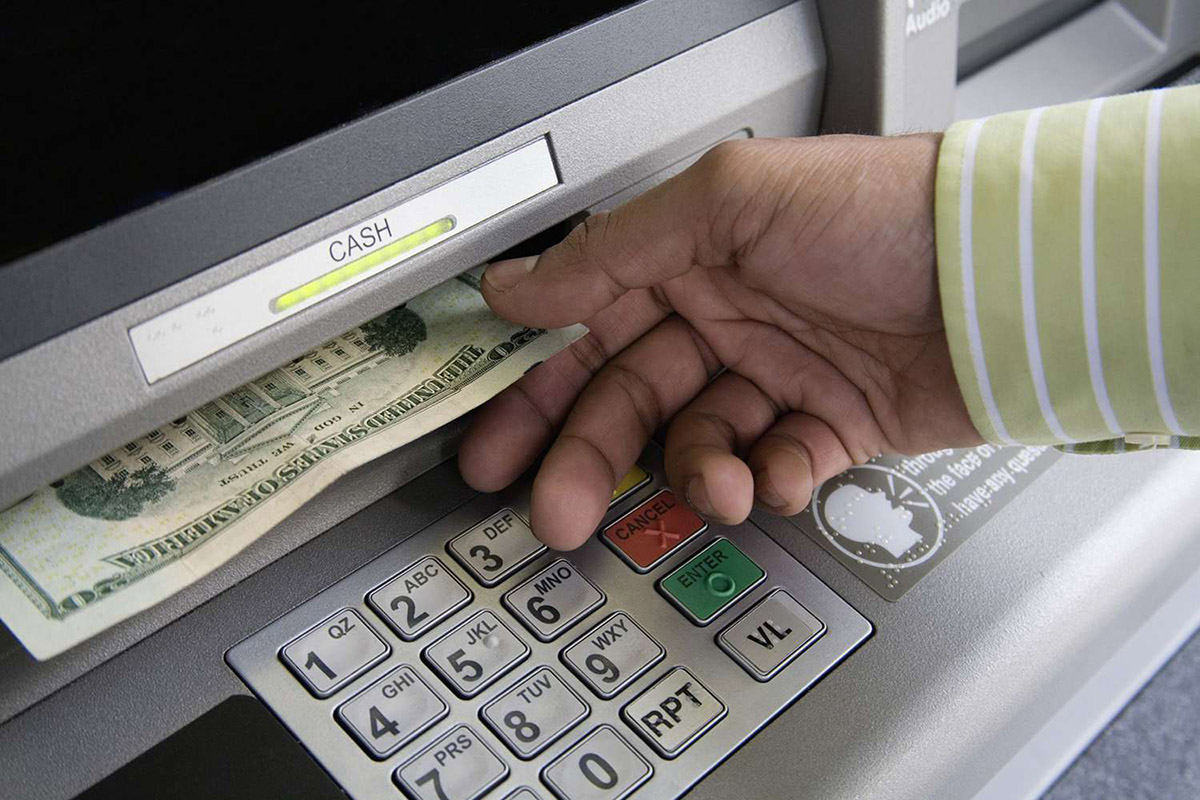

Finance
Where Is The Pin On A Credit Card
Published: November 4, 2023
Find out where the pin is located on a credit card. This essential finance information will help you protect your account and perform secure transactions.
(Many of the links in this article redirect to a specific reviewed product. Your purchase of these products through affiliate links helps to generate commission for LiveWell, at no extra cost. Learn more)
Table of Contents
Introduction
When it comes to using a credit card, you may have heard about the importance of protecting your Personal Identification Number (PIN). The PIN plays a crucial role in the security of your credit card transactions and serves as a verification method to authenticate your identity. But have you ever wondered where exactly the PIN is located on a credit card? In this article, we will explore the purpose of a PIN on a credit card and the various types of credit cards that utilize a PIN.
A credit card PIN, typically consisting of a four-digit code, acts as a safeguard against unauthorized use of your card. It is a security feature that adds an extra layer of protection to your credit card transactions. Whether you’re making a purchase at a physical store, withdrawing cash from an ATM, or conducting an online transaction, the PIN is required to verify that you are the authorized cardholder.
Understanding the anatomy of a credit card is essential to locate the PIN. A typical credit card features the cardholder’s name, card number, expiration date, and a magnetic stripe or chip. The card number, which is unique to each individual card, is typically embossed or engraved on the front of the card. The back of the card usually contains the cardholder’s signature panel and a magnetic stripe or chip. The PIN, however, is not visibly displayed on the card for security reasons.
The Purpose of a PIN on a Credit Card
The primary purpose of a PIN on a credit card is to provide an added layer of security and prevent unauthorized use. By requiring a PIN, the credit card issuer ensures that only the rightful cardholder can access and use the card for transactions.
One of the main benefits of using a PIN is that it helps protect against card theft or loss. Without the correct PIN, it is extremely difficult for someone to misuse a credit card if it falls into the wrong hands. This provides peace of mind to cardholders and helps safeguard their finances.
In addition, using a PIN also reduces the risk of fraudulent in-person transactions. When making a purchase at a physical store, the cardholder is usually required to enter their PIN into a card terminal. This not only confirms their identity but also ensures that the transaction is authorized. By requiring the PIN, it becomes much harder for thieves to use stolen or counterfeit cards.
Furthermore, the use of a PIN adds an extra layer of security to ATMs. When withdrawing cash using a credit card, the cardholder must enter their PIN as a verification method. This reduces the likelihood of unauthorized individuals accessing the cardholder’s funds. It is essential to keep your PIN confidential and avoid sharing it with anyone to maintain the highest level of security.
Overall, the purpose of a PIN on a credit card is to protect the cardholder’s identity, prevent unauthorized transactions, and reduce the risk of fraud. It serves as a critical security measure, ensuring that only the authorized cardholder can access and utilize the card for transactions.
Understanding the Anatomy of a Credit Card
To better understand where the PIN is located on a credit card, let’s delve into the anatomy of a typical credit card. While there may be variations in design and features, most credit cards share common elements.
On the front of a credit card, you will find essential information such as the cardholder’s name, the card number, and the expiration date. The card number is a unique identifier assigned to each card and is usually embossed or engraved on the surface. It is important to protect this information from unauthorized eyes as it can be used for fraudulent activities if obtained by malicious individuals.
On the back of the card, there is typically a magnetic stripe or a chip, depending on the card’s technology. The magnetic stripe contains encrypted data and can be swiped on card readers to process transactions. However, modern credit cards increasingly utilize chip-based technology, which provides enhanced security.
The chip, also known as an EMV (Europay, MasterCard, and Visa) chip, is a small metallic square located on the front side of the credit card. It is embedded with a microprocessor that generates unique transaction codes for each purchase, making it more secure than the magnetic stripe. Chip technology helps prevent the replication of the card and protects against fraud.
While the PIN is an integral part of credit card security, it is not physically displayed on the card itself. This intentional omission enhances the card’s security by ensuring that even if the card falls into the wrong hands, the PIN remains confidential.
Now that we have a better understanding of the various components of a credit card, let’s move on to discovering where the PIN is located on different types of credit cards.
Locating the PIN on Different Types of Credit Cards
The location of the PIN on a credit card can vary depending on the type of card and the technology it utilizes. Let’s explore where you can find the PIN on different types of credit cards:
1. Chip-and-PIN Credit Cards: With chip-and-PIN credit cards, the PIN is entered directly by the cardholder into a card terminal during in-person transactions. These cards have a small metallic chip embedded on the front, and the PIN is typically associated with the chip. To use a chip-and-PIN credit card, insert the card into the payment terminal and follow the prompts to enter your four-digit PIN securely.
2. Chip-and-Signature Credit Cards: Some credit cards employ chip-and-signature technology instead of chip-and-PIN. With chip-and-signature cards, the cardholder verifies their identity by providing a signature rather than a PIN. These cards still have a chip embedded, but you will sign a receipt or a touchscreen instead of entering a PIN. It’s important to note that chip-and-signature cards are less common, as chip-and-PIN is generally considered more secure.
3. Contactless Credit Cards: Contactless credit cards, also known as tap-and-go cards, offer a convenient way to make payments by simply tapping the card on a payment terminal. However, they typically do not require a PIN for contactless transactions under a certain amount. For higher-value transactions, you may be prompted to enter your PIN for added security.
4. Virtual Credit Cards: Virtual credit cards are a growing trend, especially for online transactions. These cards exist only in digital form and do not have a physical presence. When using a virtual credit card, the PIN is usually not applicable. Instead, the card is linked to your online account, and you may need to provide other authentication methods, such as a password or one-time verification code, for secure transactions.
Remember that the PIN is a critical component of credit card security. It is essential to memorize your PIN and keep it confidential. Avoid writing it down or sharing it with anyone to prevent unauthorized access to your funds or fraudulent use of your credit card.
Now that you know where to locate the PIN on different types of credit cards, let’s explore the importance of keeping your PIN secure.
Chip-and-PIN Credit Cards
Chip-and-PIN credit cards, also known as EMV cards, have become the standard for credit card technology in many countries. These cards use a microprocessor chip embedded in the card to securely store and process transaction data.
When using a chip-and-PIN credit card, the cardholder inserts the card into a compatible payment terminal and follows the prompts to enter their four-digit PIN. This PIN is a personal identifier that verifies the cardholder’s identity and authorizes the transaction. It adds an extra layer of security compared to traditional magnetic stripe cards, which are more susceptible to fraud.
The chip on the card generates a unique code for every transaction, making it difficult for fraudsters to replicate the card or use stolen information to make unauthorized purchases. The PIN ensures that only the authorized cardholder can make transactions, reducing the risk of fraudulent activity.
Chip-and-PIN technology offers several advantages over older magnetic stripe cards. Firstly, it provides increased protection against counterfeit fraud. The chip generates a unique code for each transaction, making it nearly impossible to clone the card or create fraudulent magnetic stripe versions.
Secondly, chip-and-PIN cards are more secure for in-person transactions. By entering a PIN in the payment terminal, the cardholder verifies their identity, making it harder for thieves to use stolen or lost cards. This reduces the risk of unauthorized charges and protects the cardholder’s finances.
However, it’s important to note that chip-and-PIN credit cards are most effective when used at terminals that support the technology. While the transition to chip cards has been widely adopted, some older terminals may still rely solely on magnetic stripe transactions. In such cases, the chip-and-PIN cardholder may need to swipe the card and sign a receipt instead of entering a PIN.
Overall, chip-and-PIN credit cards provide enhanced security for transactions, protecting both cardholders and merchants. By utilizing advanced technology and requiring a unique PIN for each transaction, these cards significantly reduce the risk of fraud and unauthorized use.
Next, let’s explore chip-and-signature credit cards, which offer an alternative to chip-and-PIN technology.
Chip-and-Signature Credit Cards
Chip-and-signature credit cards are another type of payment card that incorporates EMV chip technology for enhanced security. Unlike chip-and-PIN cards, where a personal identification number (PIN) is required for verification, chip-and-signature cards rely on the cardholder’s signature as proof of identity.
With a chip-and-signature credit card, the cardholder inserts the card into a chip-enabled terminal, similar to chip-and-PIN cards. However, instead of entering a PIN, the cardholder is prompted to provide their signature on a receipt or a touchscreen device.
While chip-and-signature cards offer increased security compared to traditional magnetic stripe cards, they may not provide the same level of protection as chip-and-PIN cards. The absence of a PIN means that the card can be used for transactions even if it falls into the wrong hands, as a signature alone may not be a foolproof method of verifying the cardholder’s identity.
One of the key advantages of chip-and-signature cards is their compatibility with older payment terminals that are not equipped to handle PIN verification. This allows for wider acceptance of the card, especially in locations where chip-and-PIN technology is not yet widely adopted.
It’s important to note that chip-and-signature credit cards are still more secure than magnetic stripe cards, as the chip generates unique transaction codes that are difficult to replicate. Furthermore, many merchants and card issuers offer additional security measures, such as fraud monitoring and liability protection, to safeguard against unauthorized transactions.
While chip-and-PIN technology is generally regarded as more secure, chip-and-signature cards can still provide an added layer of protection compared to magnetic stripe cards. Some individuals may prefer chip-and-signature cards due to personal preference or limited availability of chip-and-PIN options in their region.
If you have a chip-and-signature credit card, it’s essential to keep the card secure and report any lost or stolen cards immediately to prevent unauthorized use. Additionally, monitoring your credit card statements regularly can help identify and report any suspicious transactions promptly.
Now that we’ve explored chip-and-signature cards, let’s move on to the concept of contactless credit cards.
Contactless Credit Cards
Contactless credit cards have gained popularity in recent years as a convenient and efficient way to make payments. These cards utilize near-field communication (NFC) technology, allowing cardholders to make transactions simply by tapping or waving the card near a compatible payment terminal.
One of the key features of contactless credit cards is the ease and speed of transactions. Instead of having to insert the card or swipe it on a terminal, cardholders can complete their purchases quickly by tapping the card on the payment terminal. This makes contactless payments ideal for situations where speed is crucial, such as in busy retail environments or public transportation systems.
When it comes to security, contactless credit cards incorporate various measures to protect against unauthorized use. For low-value transactions, usually under a specific amount set by the card issuer, contactless payments typically do not require the cardholder to enter a PIN or provide a signature.
However, for higher-value transactions, the payment terminal may prompt the cardholder to enter their PIN as an additional layer of security. This ensures that only the rightful cardholder can authorize larger transactions, reducing the risk of fraud.
Contactless credit cards use encrypted technology to transmit payment information securely between the card and the payment terminal. This helps protect against unauthorized interception of sensitive data during the transaction process.
It’s worth noting that contactless credit cards have a unique symbol, usually in the form of a series of lines or arcs, indicating their contactless capability. This symbol can be found on the front or back of the card, making it easy to identify whether a card supports contactless payments.
While contactless credit cards offer convenience and speed, it’s essential to remain vigilant and take necessary precautions to ensure the security of your card. For instance, it’s important to keep your contactless card in a secure location, such as a wallet or purse, to prevent any accidental or unauthorized tapping of the card.
Additionally, regularly reviewing your credit card statements and monitoring your transactions can help identify any suspicious activity and report it promptly to your card issuer.
Now that we have explored contactless credit cards, let’s move on to virtual credit cards and their unique characteristics.
Virtual Credit Cards
Virtual credit cards are a modern and innovative solution for online transactions. Unlike physical credit cards, virtual credit cards only exist in a digital format and are typically associated with a specific online account or service.
These virtual cards are generated electronically, providing users with a unique card number, expiration date, and security code for each transaction. This allows users to make online purchases without revealing their actual credit card information to the merchant.
Virtual credit cards offer several advantages when it comes to security and privacy. One of the main benefits is that they help protect against potential data breaches or unauthorized access to personal credit card details. Since virtual cards come with a one-time-use or limited-use feature, even if the virtual card information is compromised, it would be of no use to the perpetrator after the specified transaction or time limit.
Another benefit of using virtual credit cards is the ability to set spending limits and expiration dates. This feature allows users to control their online spending and minimize the risk of fraudulent activities or unauthorized charges. Users can easily generate a new virtual card with updated limits and expiration dates as needed, providing greater flexibility and security.
Virtual credit cards are also an excellent option for individuals who are hesitant to share their actual credit card information online. By using a virtual card, they can enjoy peace of mind knowing that their personal information is safeguarded.
However, it’s important to note that virtual credit cards may not be widely accepted by all merchants. Some online retailers or service providers may have limitations on the type of payment methods they accept, which might exclude virtual cards.
Additionally, virtual credit cards are typically issued by specific financial institutions or online services, and the process of obtaining one may vary depending on the provider. It’s essential to research and choose a reputable and trusted issuer before creating a virtual credit card.
To make the most of virtual credit cards, it’s crucial to understand the terms and conditions associated with their use. This includes being aware of any fees involved, as some issuers may charge a small fee for generating and using virtual cards.
In summary, virtual credit cards offer enhanced security, privacy, and control for online transactions. They provide a practical solution for individuals concerned about sharing their credit card information and can help protect against unauthorized transactions or data breaches.
Now that we have covered virtual credit cards, let’s move on to the importance of keeping your PIN secure to safeguard your financial transactions.
Importance of Keeping Your PIN Secure
When it comes to credit card security, one of the most critical aspects is keeping your Personal Identification Number (PIN) secure. Your PIN acts as a personal code that verifies your identity and authorizes transactions. Here are some reasons why it is essential to keep your PIN confidential:
Prevents Unauthorized Use: By keeping your PIN confidential, you ensure that only you can authorize transactions using your credit card. This helps protect against unauthorized use if your card is lost, stolen, or accessed by someone else.
Reduces Fraud Risk: Your PIN adds an extra layer of security to your credit card transactions. It makes it difficult for fraudsters to use your card in physical stores or ATMs without knowing your PIN, reducing the risk of fraudulent charges.
Safeguards Your Finances: Your credit card is linked to your financial accounts, and unauthorized use can result in financial losses. By protecting your PIN, you minimize the chances of fraudulent transactions, ensuring the integrity of your finances.
Secures Online Transactions: While PINs are commonly used for in-person transactions, it’s crucial to use strong passwords and secure authentication methods for online transactions. This includes creating unique and complex passwords, enabling two-factor authentication, and being cautious while sharing credit card information online.
Avoids Identity Theft: In cases of identity theft, thieves may try to obtain your PIN to access funds or make unauthorized purchases. By keeping your PIN secure and not sharing it with anyone, you reduce the risk of falling victim to identity theft and financial fraud.
Protects Your Personal Information: Your PIN is a valuable piece of personal information linked to your credit card. Sharing or writing down your PIN can compromise the security of your financial accounts and potentially lead to unauthorized access to your personal information.
To ensure the utmost security for your PIN, consider the following best practices:
- Memorize your PIN and avoid writing it down or storing it electronically.
- Do not share your PIN with anyone, including family members or friends.
- When entering your PIN at ATMs or payment terminals, be mindful of your surroundings and shield the keypad from prying eyes or cameras.
- Regularly monitor your credit card statements and report any unauthorized transactions or suspicious activity to your card issuer immediately.
- If you suspect that your PIN has been compromised or if you forget your PIN, contact your card issuer promptly to reset it.
By following these precautions and keeping your PIN secure, you can have peace of mind knowing that your credit card transactions are protected and your financial information remains secure.
Now that we have emphasized the importance of PIN security, let’s conclude our discussion.
Conclusion
Understanding the importance of a Personal Identification Number (PIN) on a credit card is crucial for maintaining the security of your financial transactions. A PIN serves as a verification method, ensuring that only the authorized cardholder can access and utilize the card for purchases, ATM withdrawals, and other transactions.
Throughout this article, we’ve explored the various aspects of credit card security and the different types of credit cards that utilize a PIN. Chip-and-PIN credit cards provide enhanced security by requiring a unique PIN for each transaction, while chip-and-signature cards rely on the cardholder’s signature for verification.
Contactless credit cards offer convenience and speed for transactions, typically not requiring a PIN for low-value purchases. Virtual credit cards provide added security and privacy for online transactions by generating unique card numbers for each transaction.
Keeping your PIN secure is of utmost importance to prevent unauthorized use, protect against fraud, and safeguard your finances. By following best practices such as memorizing your PIN, not sharing it with anyone, and monitoring your credit card statements regularly, you can ensure the integrity of your credit card transactions and personal information.
Remember, credit card security is a shared responsibility between cardholders and financial institutions. It’s important to stay informed about the latest security measures, regularly update your passwords, and report any suspicious activity to your card issuer promptly.
In conclusion, maintaining the confidentiality of your PIN and understanding the security measures associated with your credit card are essential for a worry-free and safe financial experience. By being vigilant and proactive, you can protect yourself against potential fraud and enjoy the convenience of using a credit card with peace of mind.


